Not a lot of us know what Filipino food is. There’s much more to Filipino food than just rice and egg rolls, but we often gravitate towards what looks familiar because we don’t know what the other dishes are.
To kickstart your foray into trying more Filipino food, we’ve compiled a list of 10 savory and 10 sweet Filipino dishes that you should know. Try to spot these at the next Filipino party you attend — and maybe grab a plate while you’re at it.
Savory
Adobo
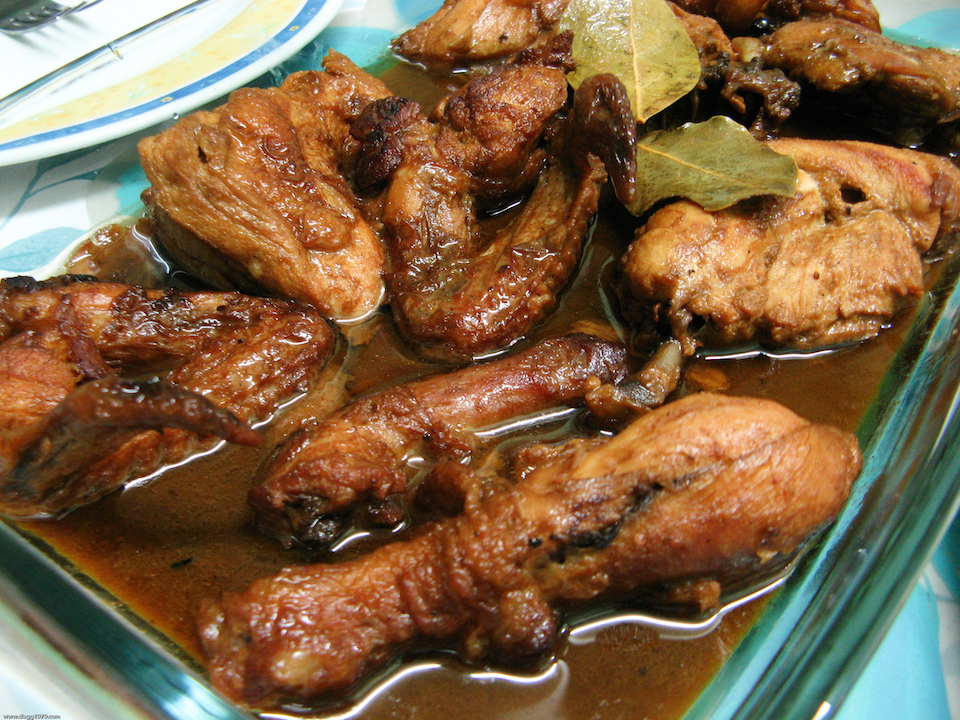
Photo courtesy of commons.wikimedia.org
Made with chicken or pork, adobo is cooked with bay leaves, vinegar, soy sauce and peppercorns for a mouth-watering scent.
Longanisa
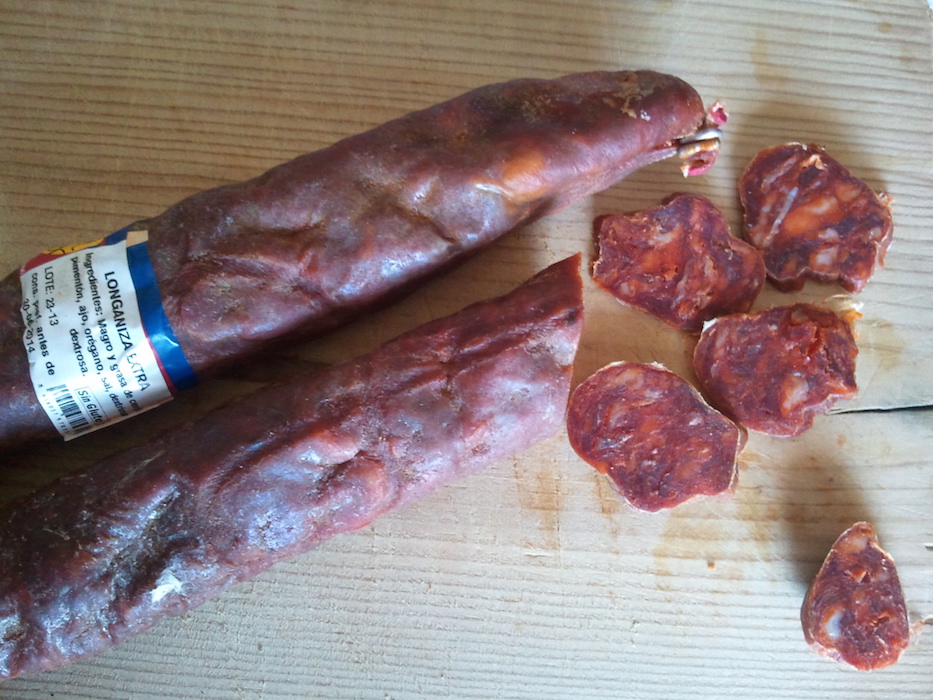
Photo courtesy of commons.wikimedia.org
Think of Spanish sausage that’s slightly sweet — kind of like chorizo.
Diniguan
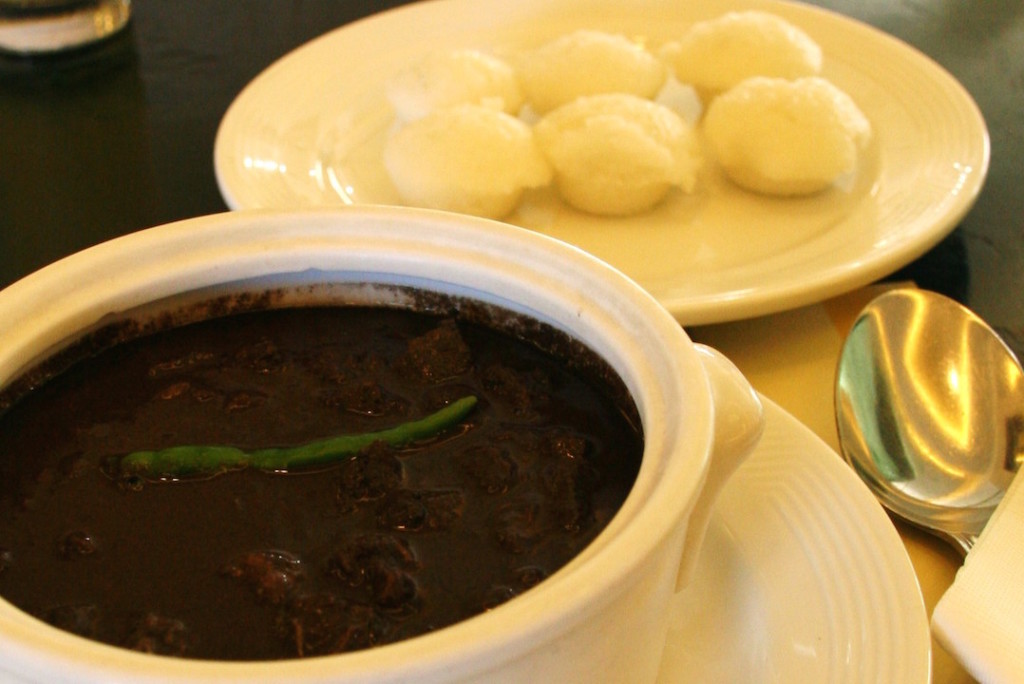
Photo courtesy of commons.wikimedia.org
This dish of pork soaked in pork blood is a Filipino delicacy.
Pancit
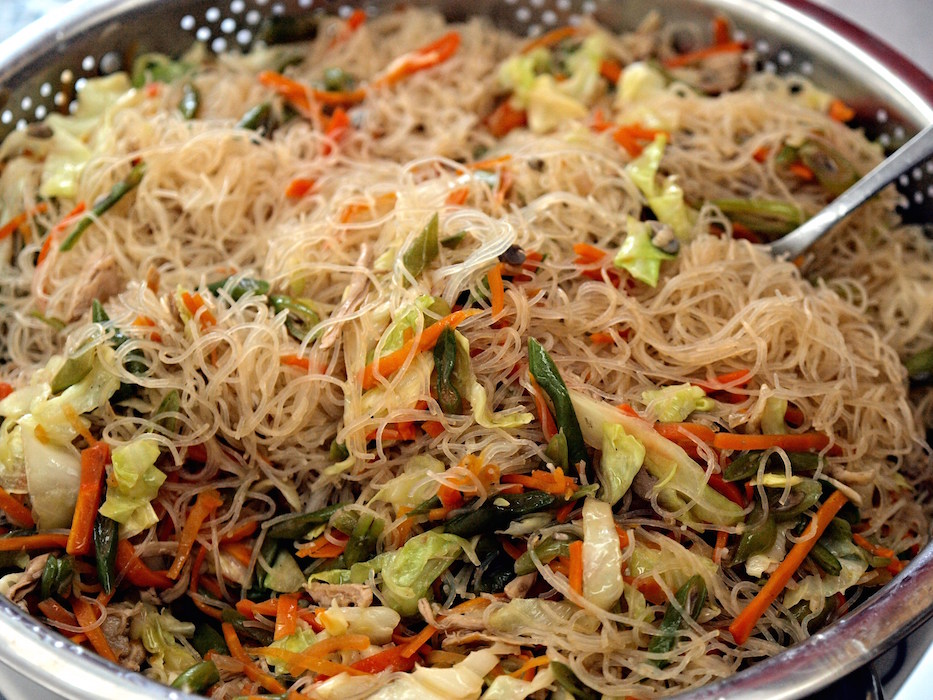
Photo courtesy of flickr.com
Pancit is a dish of thin pan-fried rice noodles mixed with vegetables, hard-boiled egg and shrimp or sausage.
Lumpia
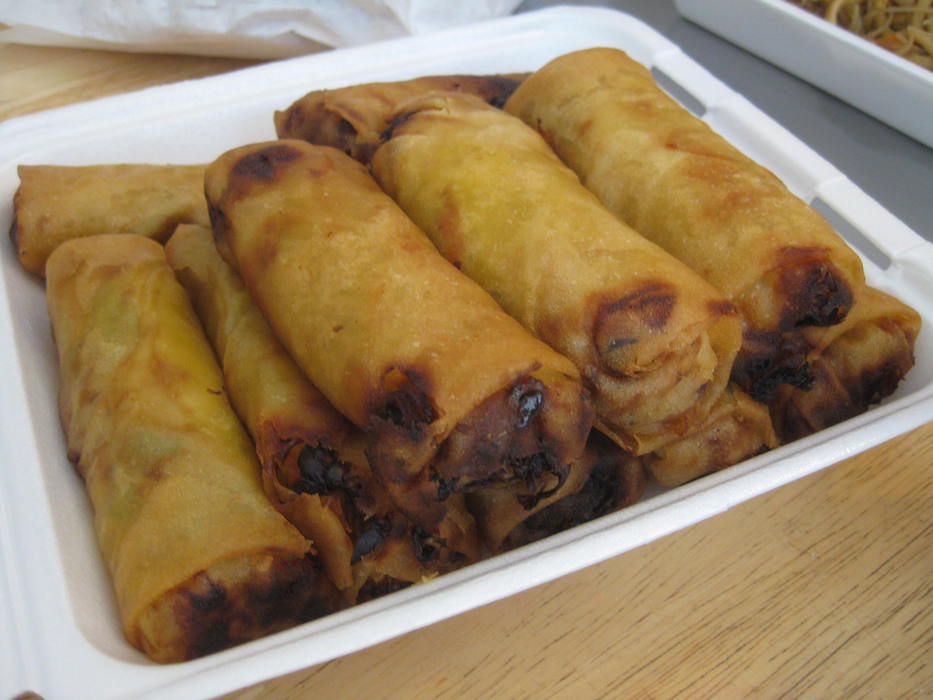
Photo courtesy of flickr.com
Try these Filipino egg rolls fresh or fried with sweet and sour sauce.
Lechon kawali
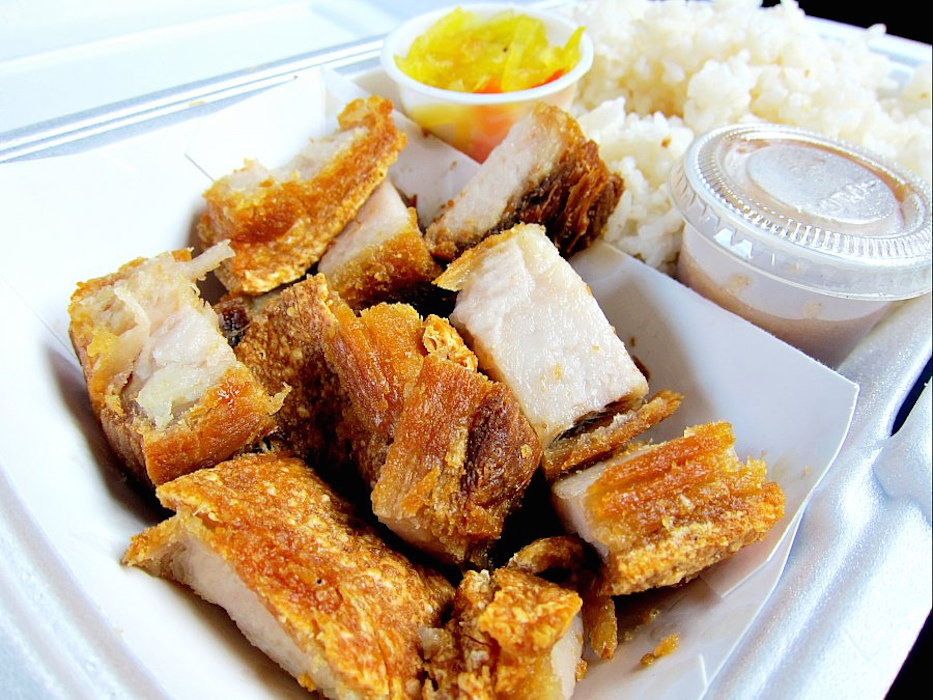
Photo courtesy of commons.wikimedia.org
Dip this fatty, fried pork in brown sauce for some additional flavor.
Spaghetti
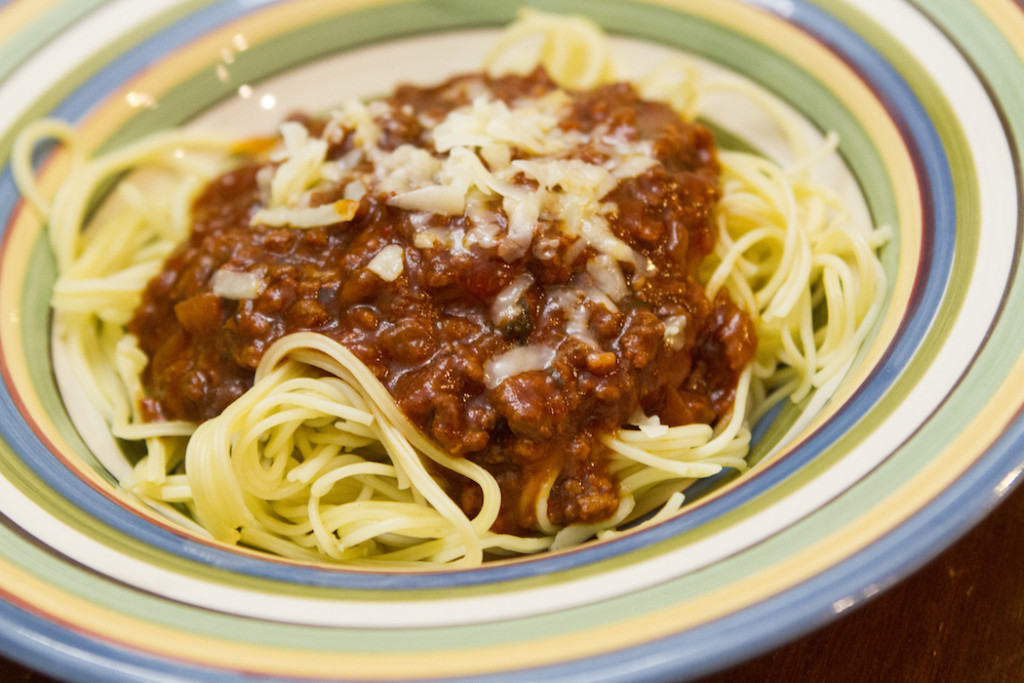
Photo courtesy of flickr.com
Filipino spaghetti is sweet, savory, and pretty popular — see Jollibee. And yes, you can pair this with rice, too.
Sinigang
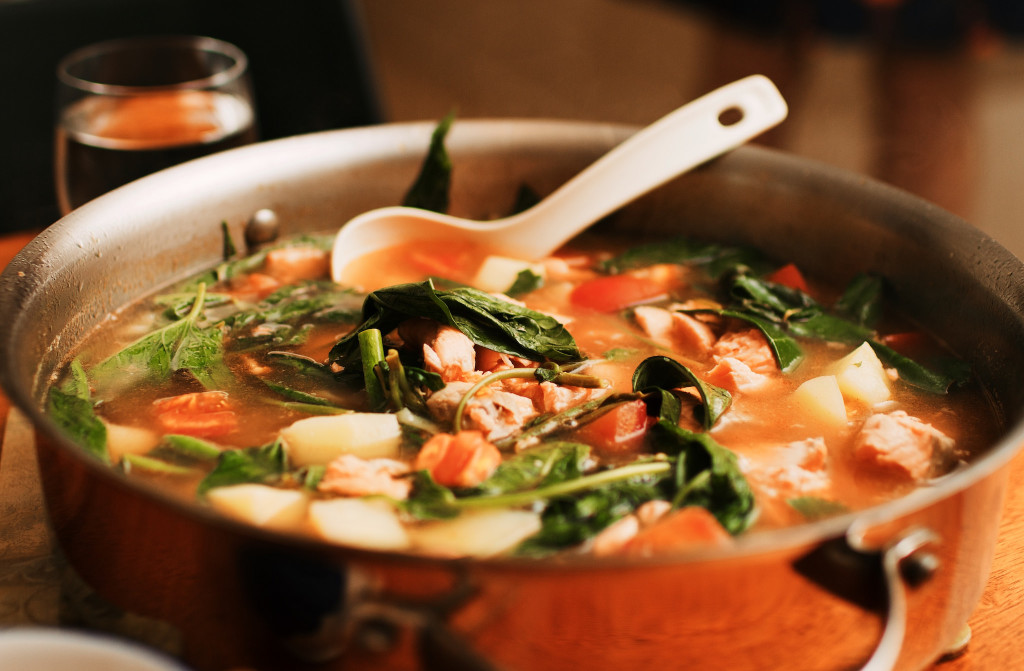
Photo courtesy of flickr.com
Sinigang is a heart-warming dish of meat and vegetables stirred in a sour tamarind broth.
Tinola
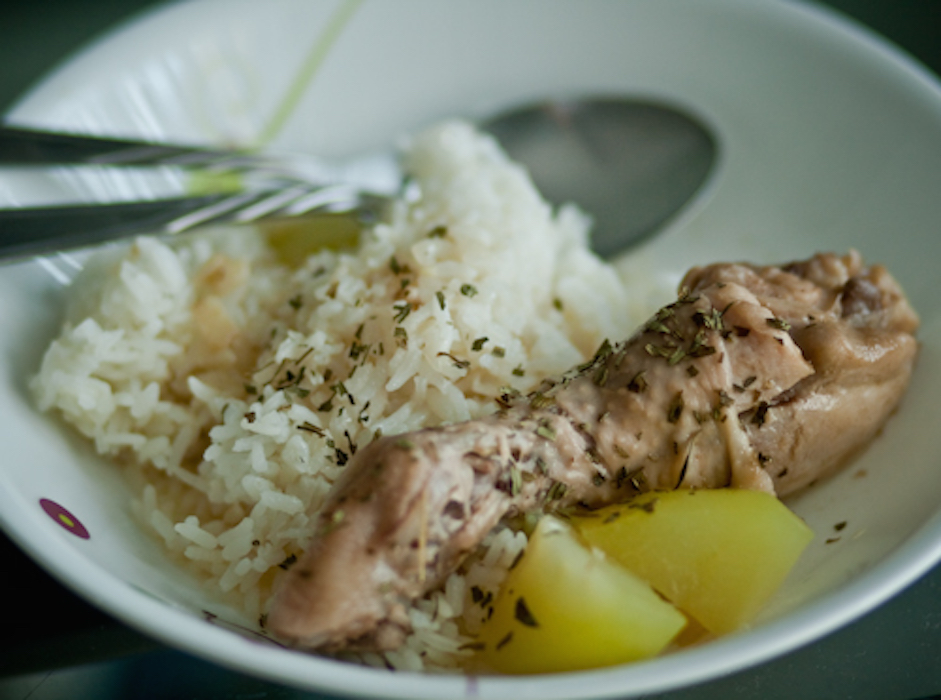
Photo courtesy of commons.wikimedia.org
Tinola is a fish sauce-based meal, cooked with papayas, chicken, ginger and chili peppers.
Kare kare
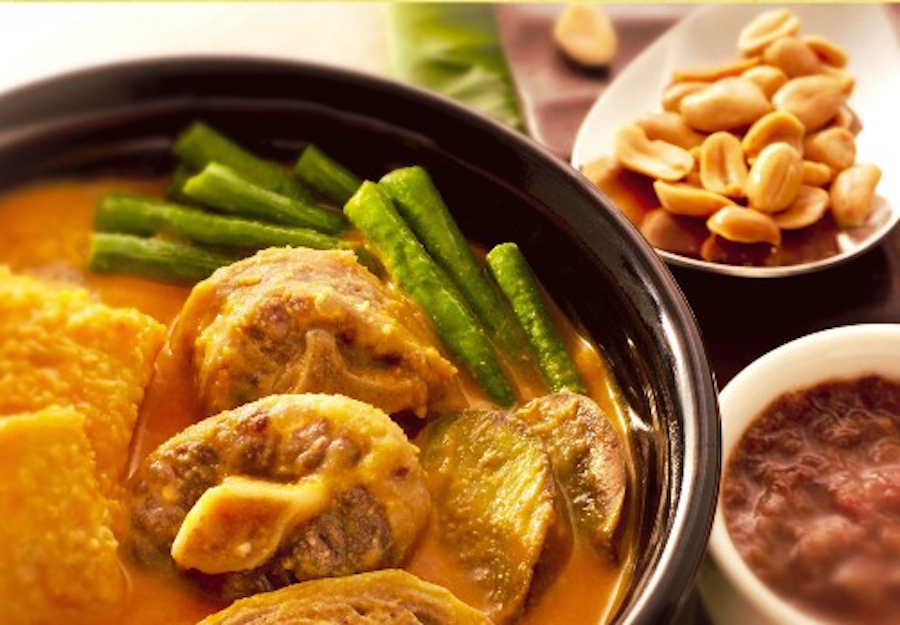
Photo courtesy of Tanya Regala
Kare-kare (pronounced “kah-reh kah-reh”) is made with meat, vegetables and tripe in a rich peanut butter sauce.
#SpoonTip: Every dish is always paired with rice.
Sweet
Turon
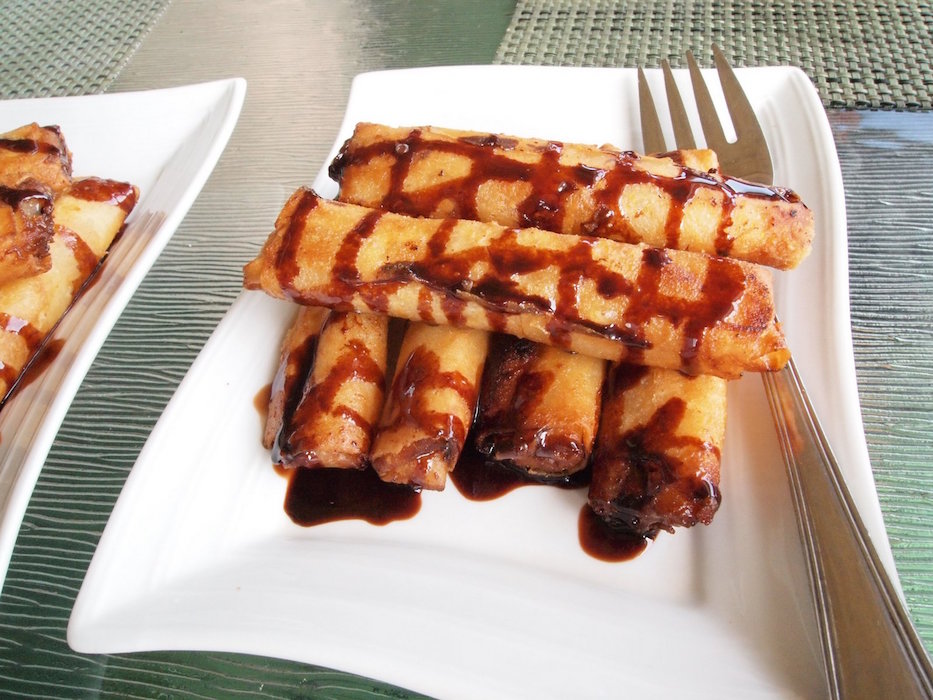
Photo courtesy of flickr.com
Sweetened with brown sugar, turon is a fried egg roll that can be filled with bananas, ube or fruit of your choice.
Sansrival
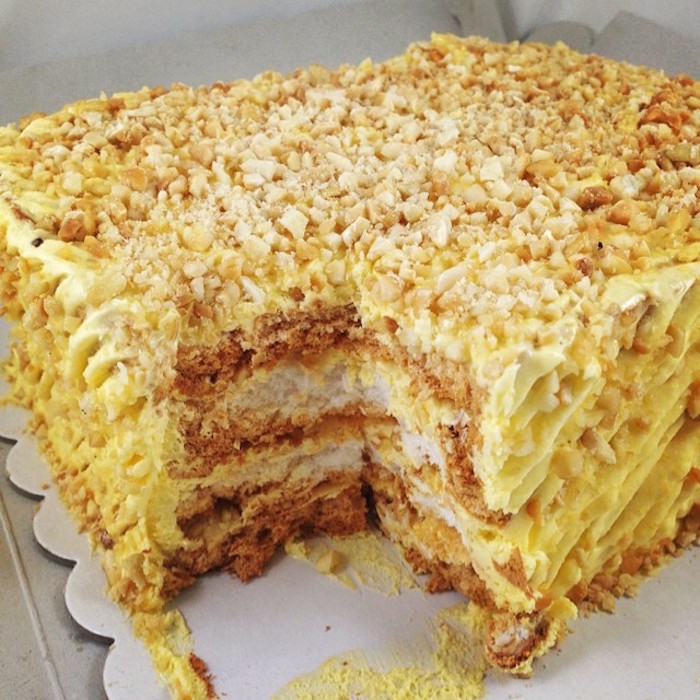
Photo courtesy of flickr.com
Sansrival is a cake with a slight crunch made from buttercream, meringue and nuts.
Cassava suman
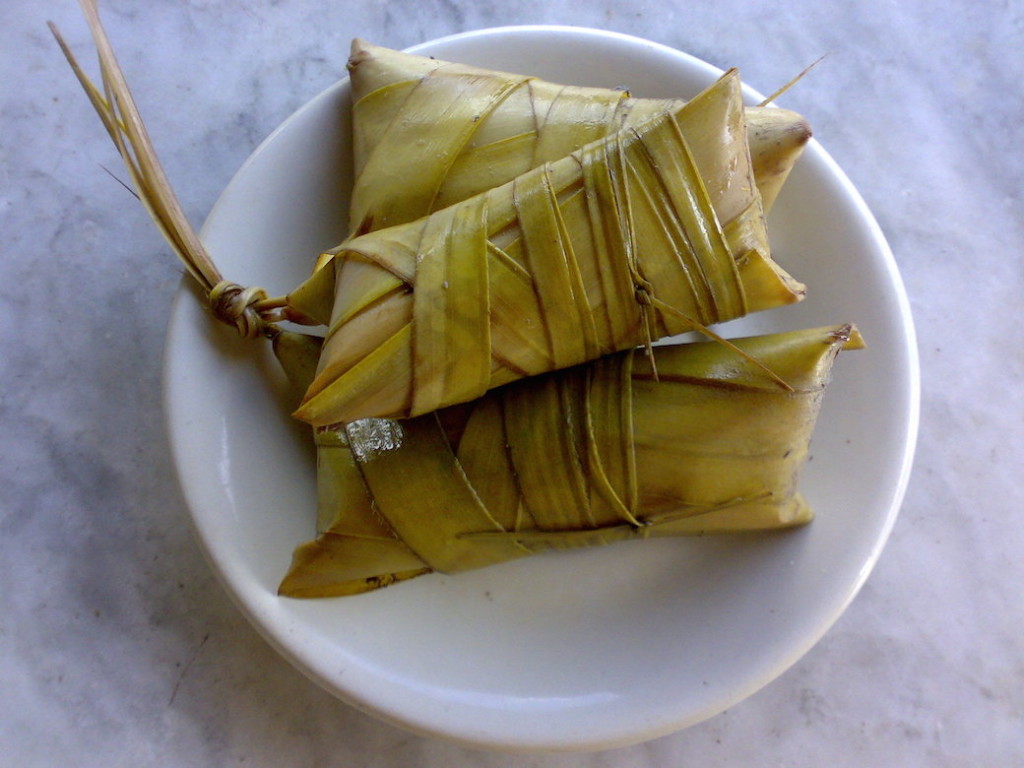
Photo courtesy of commons.wikimedia.org
This is a traditional Filipino dessert: rice cooked in coconut milk then steam-wrapped in palm leaves.
Leche flan
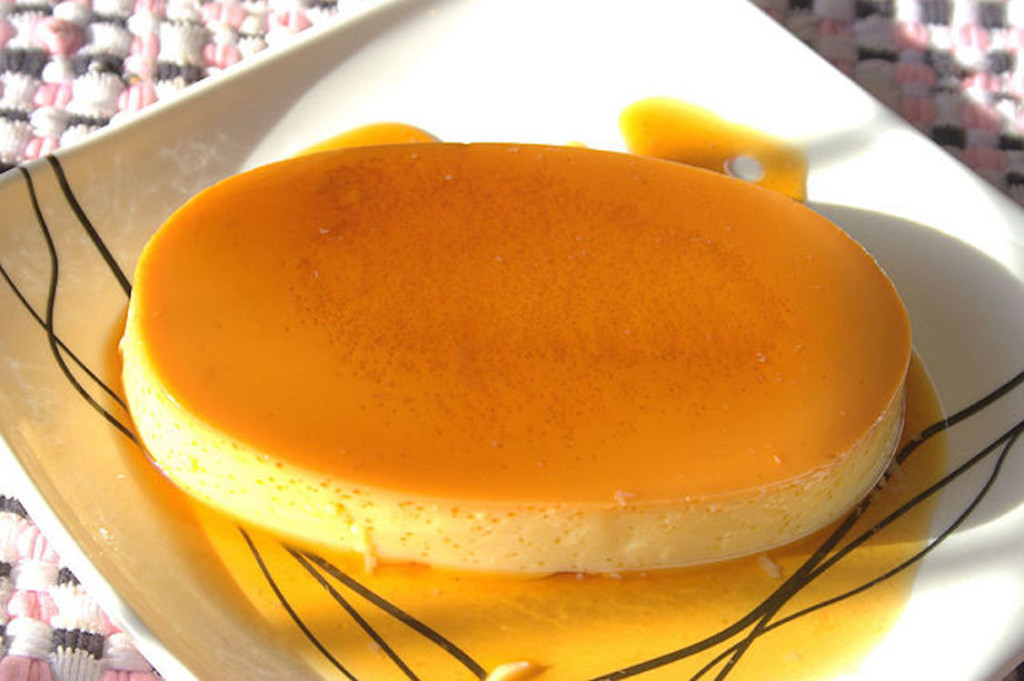
Photo courtesy of commons.wikimedia.org
Leche flan is basically Filipino crème brûlée, except there’s no hard caramel on top (but it’s still just as good).
Ube
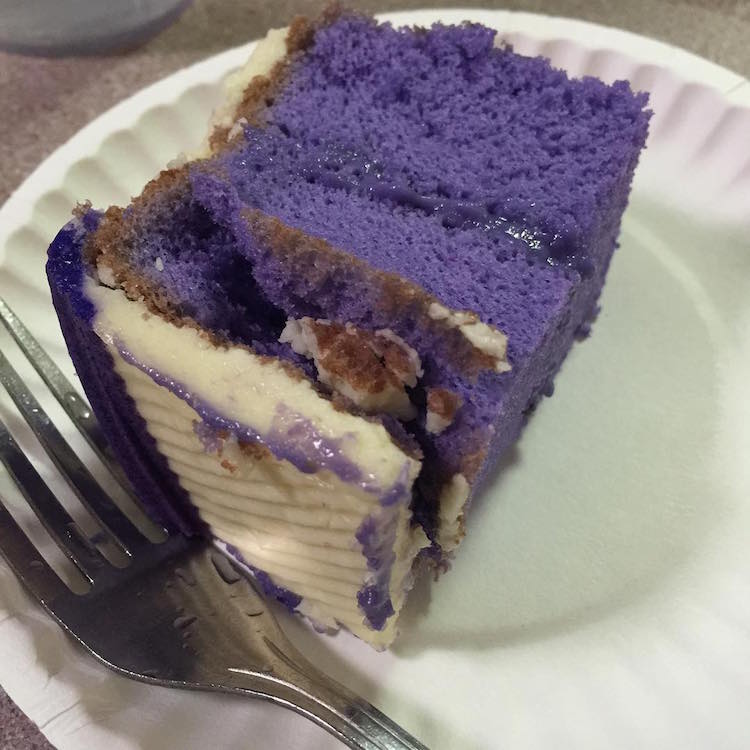
Photo courtesy of flickr.com
Ube is a well-loved purple yam that can be made into any type of dessert — think ube ice cream or even ube cookie butter.
Halo-halo
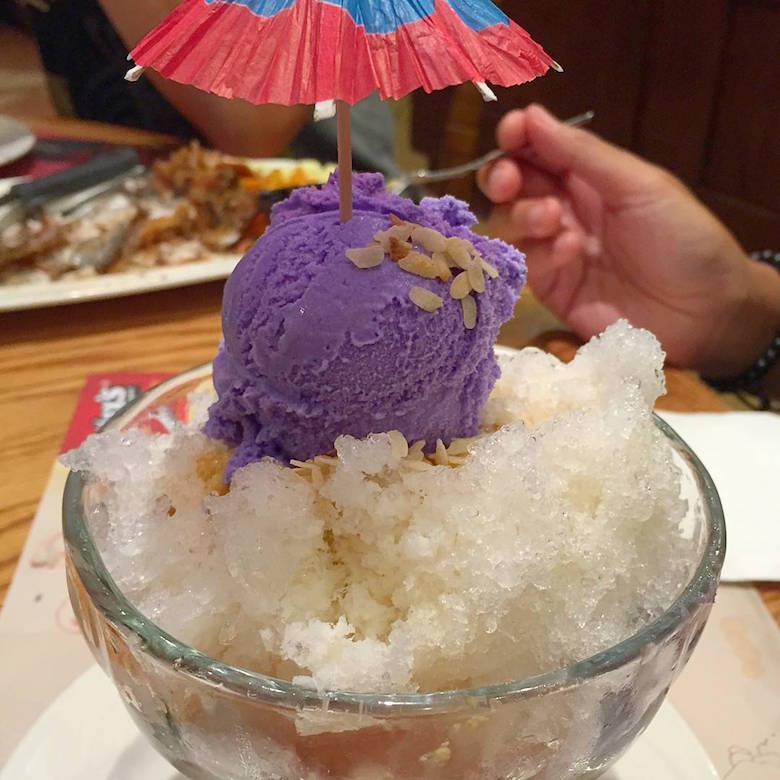
Photo courtesy of flickr.com
Literally translating to “mix-mix,” this is a combination of ice cream (most likely ube), shaved ice, sweet beans and condensed milk.
Buko pandan
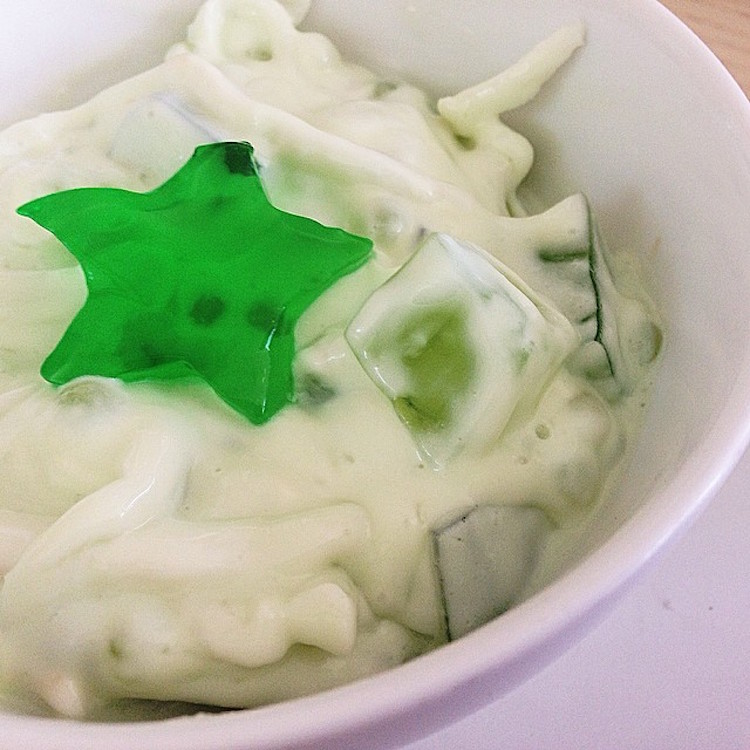
Photo courtesy of flickr.com
Jello made from coconut and screwpine (pandan) leaves, buko pandan is often used in cakes or ice cream.
Puto
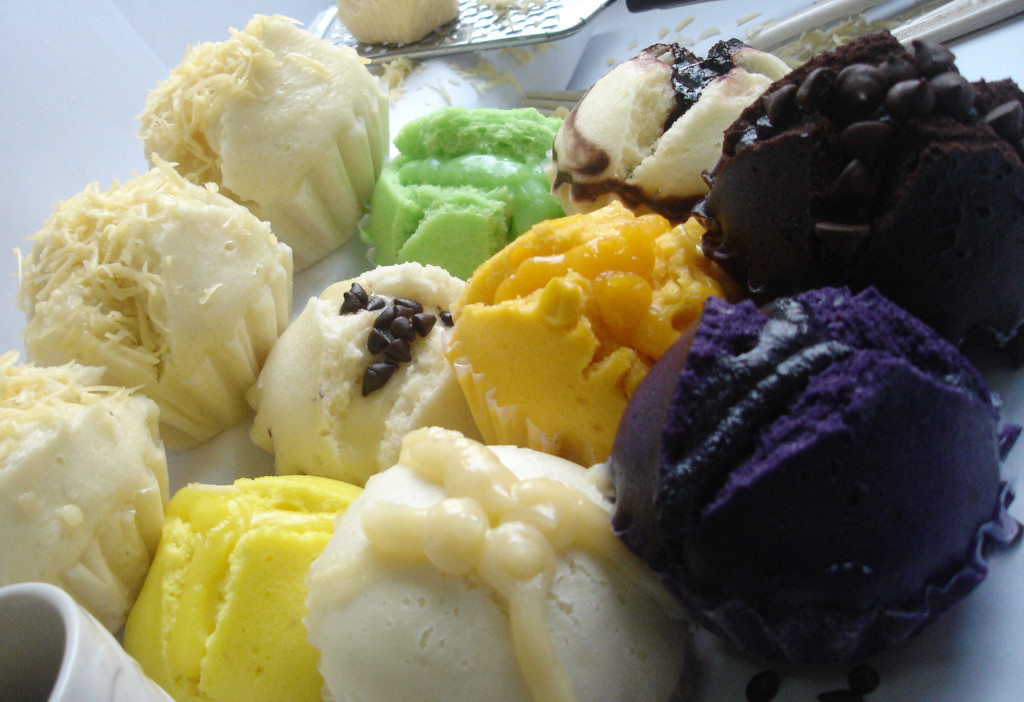
Photo courtesy of commons.wikimedia.org
Not to be confused with the Spanish expletive, this is a sticky Filipino rice cake that comes in an assortment of flavors.
Ensyamada
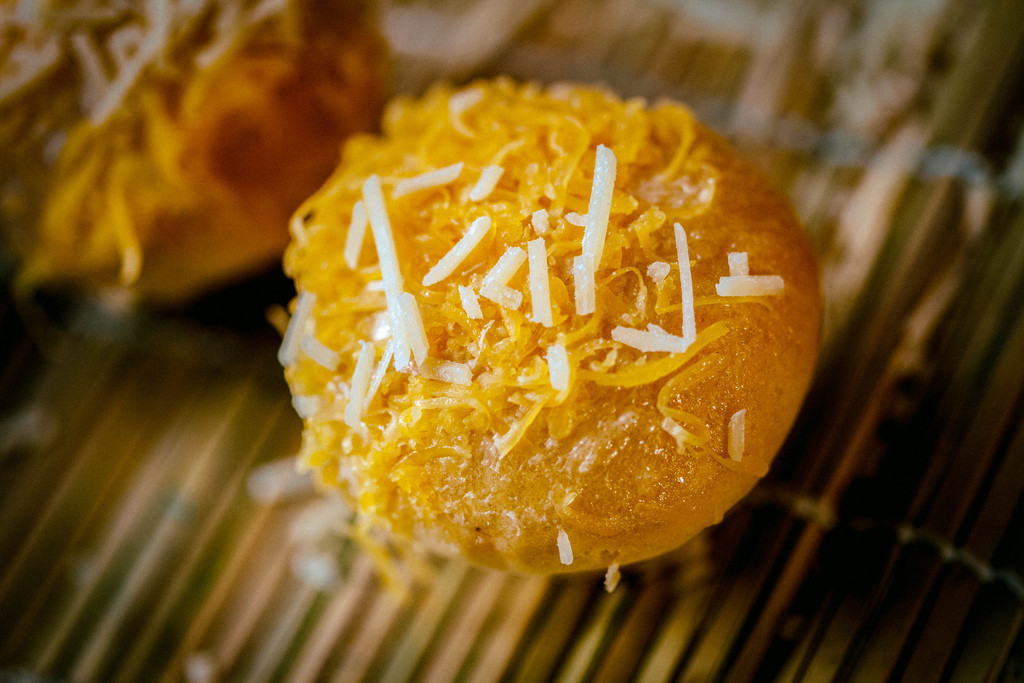
Photo courtesy of staticflickr.com
This is a slightly more savory but still sweet take on mamon. But vegetarians, beware: it has pork lard in it.
Bibingka
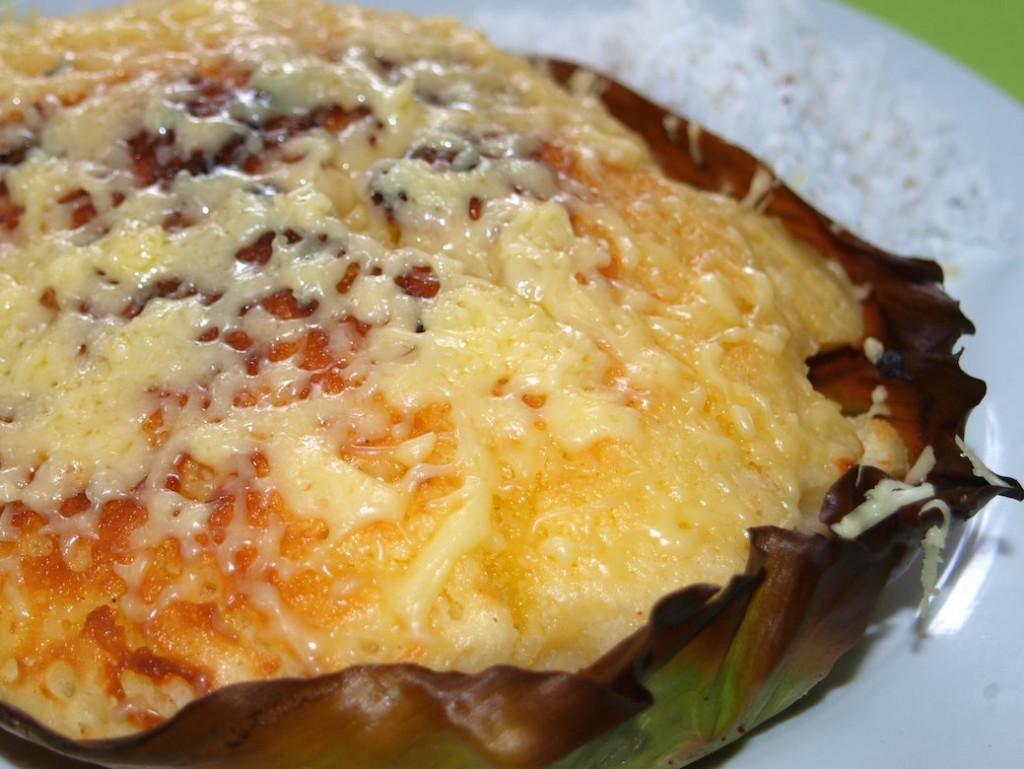
Photo courtesy of commons.wikimedia.org
Bibingka is a Filipino classic: coconut rice cake lined with a huge banana leaf.
#SpoonTip: Filipino bakeries such as Valerio’s, Red Ribbon and Goldilocks carry many of these desserts and more.
This isn’t an exhaustive list, but we hope we piqued your interest into trying — or even making — Filipino food.

